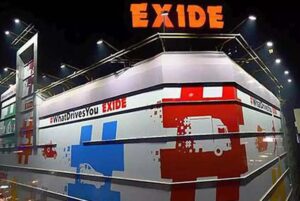Exide Industries has claimed to be actively engaged in discussions with prominent automotive and industrial customers, including both established players and startups, for its lithium battery segment, the company informed investors during a call.
 The development comes even as Exide Industies has been taking strides in the electric vehicle (EV) space with the establishment of a 6 GWh lithium cell manufacturing facility in collaboration with SVOLT.
The development comes even as Exide Industies has been taking strides in the electric vehicle (EV) space with the establishment of a 6 GWh lithium cell manufacturing facility in collaboration with SVOLT.
This move aligns with the company’s anticipation of a surge in lithium battery demand, projected to reach 40–50 GWH by 2025 and 150–160 GWH by 2030. The facility is expected to commence pilot production by Q4 FY25, with a vision for an eventual ramp-up to 12 GWH.
Offering an update on the project, Exide Industries management noted that the recruitment of a top-tier team comprising experienced and senior personnel to support project execution and delivery has been completed. Secondly, all key approvals for the project have been obtained, and on-ground construction work is already in progress. Further, order placement for equipment is underway, along with the onboarding of suppliers. Also, the company’s R&D members training with SVOLT team is underway.
Subir Chakraborty, MD & CEO, said, “Our lithium-ion cell manufacturing project is progressing well. We are excited about the future and look forward to becoming one of the leading domestic players offering state-of-the-art products and solutions in the fast-growing electric mobility space as well as for stationary applications.”
The company’s net profit during Q2FY24 stood at Rs 287 crore, as against Rs 246 crore in Q2FY23. The revenues during Q2 FY24 stood at Rs 4,107 crore as against Rs 3,730 crore in Q2FY23.
Subir Chakraborty, MD & CEO, said, “We continue to deliver an upbeat performance, with operating profits growing by 17% and 14% in the second quarter and the first half of the current financial year, respectively. Sales growth of 10% during the quarter was broad-based, with both automotive and industrial verticals growing at a healthy pace.”
As per Chakraborty, the input costs were slightly lower, and this, along with effective cost optimisation initiatives, aided growth in profits. In the near-to-medium term, the company remains optimistic of the demand scenario.
